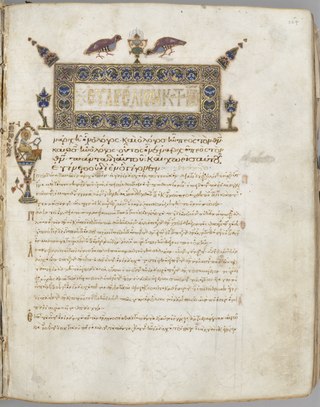
An illuminated manuscript is a formally prepared document where the text is often supplemented with flourishes such as borders and miniature illustrations. Often used in the Roman Catholic Church for prayers, liturgical services and psalms, the practice continued into secular texts from the 13th century onward and typically include proclamations, enrolled bills, laws, charters, inventories and deeds.

The Book of Kells is an illuminated manuscript Gospel book in Latin, containing the four Gospels of the New Testament together with various prefatory texts and tables. It was created in a Columban monastery in either Ireland, Scotland or England, and may have had contributions from various Columban institutions from each of these areas. It is believed to have been created c. 800 AD. The text of the Gospels is largely drawn from the Vulgate, although it also includes several passages drawn from the earlier versions of the Bible known as the Vetus Latina. It is regarded as a masterwork of Western calligraphy and the pinnacle of Insular illumination. The manuscript takes its name from the Abbey of Kells, County Meath, which was its home for centuries.
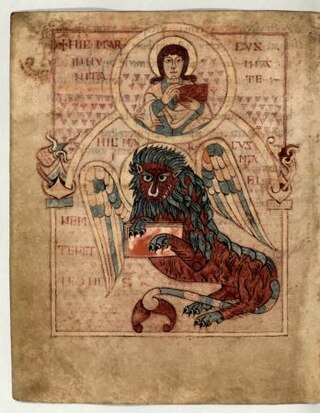
The Book of Cerne is an early ninth-century Insular or Anglo-Saxon Latin personal prayer book with Old English components. It belongs to a group of four such early prayer books, the others being the Royal Prayerbook, the Harleian prayerbook, and the Book of Nunnaminster. It is now commonly believed to have been produced sometime between ca. 820 and 840 AD in the Southumbrian/Mercian region of England. The original book contains a collection of several different texts, including New Testament Gospel excerpts, a selection of prayers and hymns with a version of the Lorica of Laidcenn, an abbreviated or Breviate Psalter, and a text of the Harrowing of Hell liturgical drama, which were combined to provide a source used for private devotion and contemplation. Based on stylistic and palaeographical features, the Book of Cerne has been included within the Canterbury or Tiberius group of manuscripts that were manufactured in southern England in the 8th and 9th centuries AD associated with the Mercian hegemony in Anglo-Saxon England. This Anglo-Saxon manuscript is considered to be the most sophisticated and elaborate of this group. The Book of Cerne exhibits various Irish/Celtic, Anglo-Saxon, Continental, and Mediterranean influences in its texts, ornamentation, and embellishment.

The Book of Deer is a 10th-century Latin Gospel Book with early 12th-century additions in Latin, Old Irish and Scottish Gaelic. It contains the earliest surviving Gaelic writing from Scotland.

Andrei Rublev was a Muscovite icon painter born in the 1360s who died between 1427 and 1430 in Moscow. He is considered to be one of the greatest medieval Russian painters of Orthodox Christian icons and frescos.

A miniature is a small illustration used to decorate an ancient or medieval illuminated manuscript; the simple illustrations of the early codices having been miniated or delineated with that pigment. The generally small scale of such medieval pictures has led to etymological confusion with minuteness and to its application to small paintings, especially portrait miniatures, which did however grow from the same tradition and at least initially used similar techniques.

The St Augustine Gospels is an illuminated Gospel Book which dates from the 6th century. It was made in Italy and has been in England since fairly soon after its creation; by the 16th century it had probably already been at Canterbury for almost a thousand years. It has 265 leaves measuring about 252 x 196 mm, and is not entirely complete, in particular missing pages with miniatures.

The Rabbula Gospels, or Rabula Gospels, is a 6th-century illuminated Syriac Gospel Book. One of the finest Byzantine works produced in Asia, and one of the earliest Christian manuscripts with large miniatures, it is distinguished by the miniaturist's predilection for bright colours, movement, drama, and expressionism. Coming from a period from in which little art survived, and which saw great development in Christian iconography, the manuscript has a significant place in art history, and is very often referred to.

Evangelist portraits are a specific type of miniature included in ancient and mediaeval illuminated manuscript Gospel Books, and later in Bibles and other books, as well as other media. Each Gospel of the Four Evangelists, the books of Matthew, Mark, Luke, and John, may be prefaced by a portrait of the Evangelist, usually occupying a full page. Their symbols may be shown with them, or separately. Often they are the only figurative illumination in the manuscript. They are a common feature in larger Gospel Books from the earliest examples in the 6th century until the decline of that format for illustrated books in the High Middle Ages, by which time their conventions were being used for portraits of other authors.

The Ostromir Gospels is the oldest dated East Slavic book.. The Ostromir Gospels was created by deacon Gregory for his patron, Posadnik Ostromir of Novgorod, in 1056 or 1057, probably as a gift for a monastery.

The Kiev Psalter of 1397, or Spiridon Psalter, is one of the most famous East Slavic illuminated manuscripts, containing over three hundred miniatures. It was written in 1397 by the scribe, Archdeacon Spiridon in Kiev, "at the command of Bishop Mikhail"; however, both scribe and patron had recently arrived from Moscow, and the decorations were probably added there later, in a refined and lively style, closely following a Byzantine 11th century Psalter.
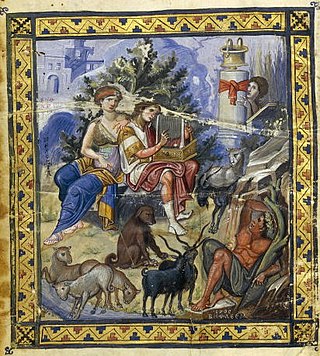
The Paris Psalter is a Byzantine illuminated manuscript, 38 x 26.5 cm in size, containing 449 folios and 14 full-page miniatures. The Paris Psalter is considered a key monument of the so-called Macedonian Renaissance, a 10th-century renewal of interest in classical art closely identified with the emperor Constantine VII Porphyrogenitus (909-959) and his immediate successors.
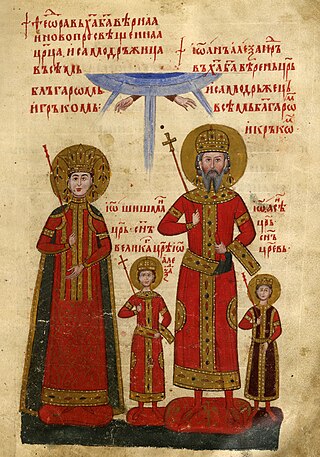
The Gospels of Tsar Ivan Alexander, Tetraevangelia of Ivan Alexander, or Four Gospels of Ivan Alexander is an illuminated manuscript Gospel Book, written and illustrated in 1355–1356 for Tsar Ivan Alexander of the Second Bulgarian Empire. The manuscript is regarded as one of the most important manuscripts of medieval Bulgarian culture, and has been described as "the most celebrated work of art produced in Bulgaria before it fell to the Turks in 1393".

Armenian illuminated manuscripts, form an Armenian tradition of formally prepared documents where the text is often supplemented with flourishes such as borders and miniature illustrations. They are related to other forms of Medieval Armenian art, and to Byzantine illuminated manuscripts. The earliest surviving examples date back to the Golden Age of Armenian art and literature in the 5th century. Armenian illuminated manuscripts embody Armenian culture; they illustrate its spiritual and cultural values.

William de Brailes was an English Early Gothic manuscript illuminator, presumably born in Brailes, Warwickshire. He signed two manuscripts, and apparently worked in Oxford, where he is documented from 1238 to 1252, owning property in Catte Street near the University Church of St Mary the Virgin, roughly on the site now occupied by the chapel of All Souls College, where various members of the book trade lived. He was married, to Celena, but evidently also held minor orders, as at least three self-portraits show him with a clerical tonsure. This was not unusual: by this date, and with the exception of the St. Albans monk Matthew Paris, the only other English illuminator of the period about whom we have significant personal information, most English illumination seems to have been done in commercial workshops run by laymen.
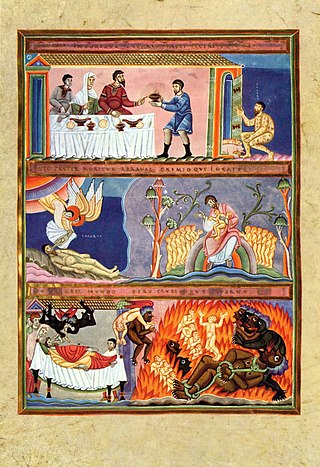
The Codex Aureus of Echternach is an illuminated Gospel Book, created in the approximate period 1030–1050, with a re-used front cover from around the 980s. It is now in the Germanisches Nationalmuseum in Nuremberg.
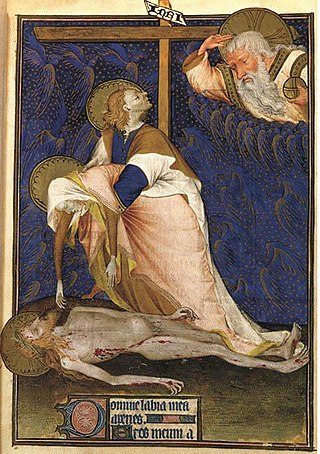
The Grandes Heures de Rohan is an illuminated manuscript book of hours, painted by the anonymous artist known as the Rohan Master, probably between 1418 and 1425, in the Gothic style. It contains the usual offices, prayers and litanies in Latin, along with supplemental texts, decorated with 11 full page, 54 half page, and 227 small miniatures, decorated with tempera paints and gold leaf. The book margins are decorated with Old Testament miniatures with captions in Old French, in the style of a Bible moralisée. The full page illuminations are renowned for the highly emotional and dramatic portrayal of the agonies of Christ and the grief of the Virgin. According to Millard Meiss, "The Rohan Master cared less about what people do than what they feel. Whereas his great predecessors excelled in the description of the novel aspects of the natural world, he explored the realm of human feeling." Meiss concludes that the Rohan Master was the "greatest expressionist in 15th century France." The manuscript is currently housed in the Bibliothèque Nationale, Paris, France.

The British Library is the national library of the United Kingdom and is one of the largest libraries in the world. It is estimated to contain between 170 and 200 million items from many countries. As a legal deposit library, the British Library receives copies of all books produced in the United Kingdom and Ireland, including a significant proportion of overseas titles distributed in the UK. The Library is a non-departmental public body sponsored by the Department for Digital, Culture, Media and Sport.
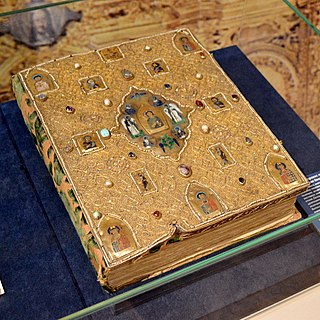
Mstislav Gospel is a 12th-century manuscript of the four Gospels on parchment in Old Church Slavonic. It is kept in the State Historical Museum in Moscow. The manuscript contains the text of the four Gospels on 213 parchment leaves. Its miniatures, headpieces, and illuminated initials are in several colors and contain copious amounts of gold.

The Emperor's Bible, also known as Codex Caesareus, Codex Caesareus Upsaliensis or the Goslar Gospels, is an 11th-century illuminated manuscript currently in Uppsala University Library, Sweden. Despite its name, it is not a Bible but a Gospel Book. The book was made in the scriptorium of Echternach Abbey, and is one of four preserved large Gospel Books made there during the 11th century. It was commissioned by Emperor Henry III and donated by him to Goslar Cathedral, where it remained until the Thirty Years' War. It was then lost for about 100 years. Its previous richly decorated cover was also lost at this time at the latest. The book later appeared again in the possession of Swedish diplomat and civil servant Gustaf Celsing the Elder. At the death of his son, it was acquired by Uppsala University.




















